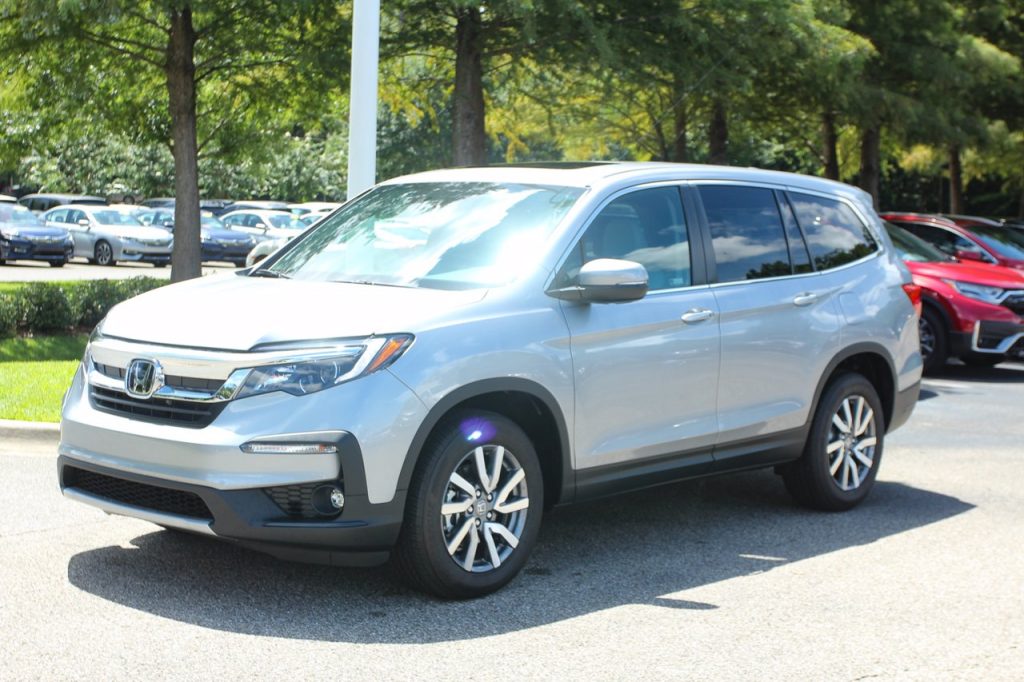Automakers generally offer four different configurations to choose from – rear-wheel drive (RWD), front-wheel drive (FWD), four-wheel drive (4WD) and all-wheel drive (AWD).
As a driver, you need to consider if your vehicle’s wheel drive system is appropriate for your driving habits and the roads you typically travel. Continue reading to understand the advantages of different options.
Rear-Wheel Drive: Pushing from the Back End
If you’ve ever ridden a bicycle or a motorcycle, you’re already familiar with rear-wheel drive. This technology, developed in the 1800s, applies force to the back wheel or axle to propel the whole vehicle forward.
As the first automobiles were developed, most incorporated similar layouts with front-mounted engines driving the back wheels. The RWD configurations of the modern era, however, are most often found on trucks and other heavy-bodied vehicles. Having the drive wheels in the back provides powerful acceleration, as the rear wheels can dig in and give you a nice push forward.
Decades of tinkering and refining have resulted in modern racers that dominate competitive circuits and tracks with smoother handling and balance. Some of the techniques routinely employed by top drivers, like swinging vehicles through tight corners, are possible largely because of RWD configurations.
The downside of connecting a forward-mounted engine to the rear axle is that doing so requires several heavy, bulky parts that weigh the chassis down and decrease fuel efficiency in the process.
Front-Wheel Drive: Consolidating Vehicle Design

In the late 1970s, motorists and automakers started growing increasingly conscious of concepts many of us now take for granted, such as fuel economy. The 1970s oil embargo and various environmental concerns shifted the public demand toward cars that cost less to run, manufacture, and maintain. The front-wheel drive configuration, which groups the engine, differential, transmission, drive axle and other components right on top of each other, has proven to be a highly efficient design for reducing overall material and operating costs.
Variants of the FWD layout have since become some of the most common systems in passenger vehicles, and are most often found in compact and mid-range cars. While FWD owners already enjoy better gas mileage, the compact drivetrain arrangements also leave plenty of extra space for people and cargo.
Regarding handling aspects, the FWD vehicle’s stacked drivetrain model is perfect for navigating through snow, mud and other slippery or layered terrain. Because the drive axle mounting supports the weight of the engine and other parts, the wheels get pushed downwards more. In hazardous conditions, FWD vehicles will exhibit better grip.
On the other hand, FWD drivetrains might also result in uneven transfer of weight throughout the vehicle. The front brakes and tires do most of the work when you decide to speed up or slow down; and, as a result, forward components may require more frequent maintenance or replacement.
Four-Wheel Drive: The Best of Both Worlds?
Instead of relying on the differentials used between the front and rear axles of other vehicles, 4WD vehicles usually employ a device known as a transfer case. Transfer cases take power from the transmission and put it to good use by rotating the rear and front axles.
Innovative chain-drive mechanisms and gearing arrangements allow transfer cases to perform unique situational functions; for instance, they’re often used to keep out-of-sync axles spinning at the correct speeds in on-road vehicles fitted with bigger back tires. Off-road enthusiasts also use transfer-case-equipped vehicles to selectively lock their axles so that they can power through mud and frozen ground.
Most 4WD vehicles function in front or rear two-wheel drive mode until you decide to engage all four wheels. These trucks, SUVs and other large-chassis vehicles’ axles can be operated in a locked-together mode, so 4WD is great for maximizing usable torque when you can’t count on much traction.
All-Wheel Drive: Tackling All Terrain
AWD is a type of four-wheel drive. While it transmits power to the wheels, it allows each wheel to rotate independently and travel at different speeds, creating great situational traction and handling. This independent rotation is especially helpful when your right and left wheels may have to travel different distances, such as when you’re turning a corner or traveling over slippery terrain, like ice.
In full-time AWD, both the front and rear axles are driven all the time, which helps the car handle better. A car with part-time AWD sends torque to two driven wheels, either the front or rear, and automatically engages the other two wheels when road conditions demand extra traction.
AWD vehicles started gaining popularity during the 1980s. While these high-traction configurations were once limited to fancy sports cars, their practicality and ease of use helped them spread throughout the entire vehicle market.
Those who prefer AWD vehicles often cite the fact that they can take advantage of their features without doing anything special, as these systems are generally smart enough to send power to whichever wheels require it most. The driver does not have to decide which axle or wheels to power, even when they are traveling off road. Although AWD vehicles generally cost more when they’re new, depending on the market, they tend to retain higher market prices as they age.
So which drivetrain is best for you? In the end, it all comes down to your driving habits and long-term goals. Consider what it takes to stay in control on the roads you routinely tackle, but also think about where your journeys might take you down the line.
 Proctorcars is a brand new car magazine bringing you the latest information about car technology, in-depth guides on a variety of automotive and driving topics as well as fun and interesting articles that you don’t want to miss!
Proctorcars is a brand new car magazine bringing you the latest information about car technology, in-depth guides on a variety of automotive and driving topics as well as fun and interesting articles that you don’t want to miss!